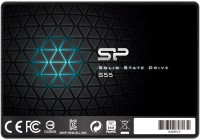SSD Silicon Power series Ace (quick interface)
prices on 3 modelsSilicon Power Ace (3D TLC)
As usual, the target audience for such products are people who are looking for an affordable and at the same time high-quality SSD to replace an outdated hard drive, or to pair with an existing small SSD. A similar scheme was popular several years ago, when a small 128 GB SSD was bought to install the system, and all the necessary information was stored on a more accessible hard drive.
 |
Ace series drives are based on 3D TLC NAND memory. They stand out from the crowd of other low-cost SSDs due to the use of a controller of their own production and the presence of not very common things like the Bad Block Manager mechanism and the internal auto-copy function. However, it is difficult to say anything for sure here, since Silicon Power periodically changes the hardware and technical capabilities of already released models without warning based on the current market situation. Usually, this disadvantage is smoothed out by a low price. For many owners of old PCs and laptops, this is a serious motivator.
The range of the Ace series is mostly represented by classic 2.5 format models. A little later, several compact M.2 drives entered the family, which are especially useful when upgrading storage in a laptop or when building a compact work or gaming computer. However, these are not quite familiar M.2 SSDs - instead of supporting the NVMe interface, the same SATA 3 bus as in other models is used to interact with the motherboard. Therefore, line speeds for read and write operations typically range from 430 to 530 MB/s.









